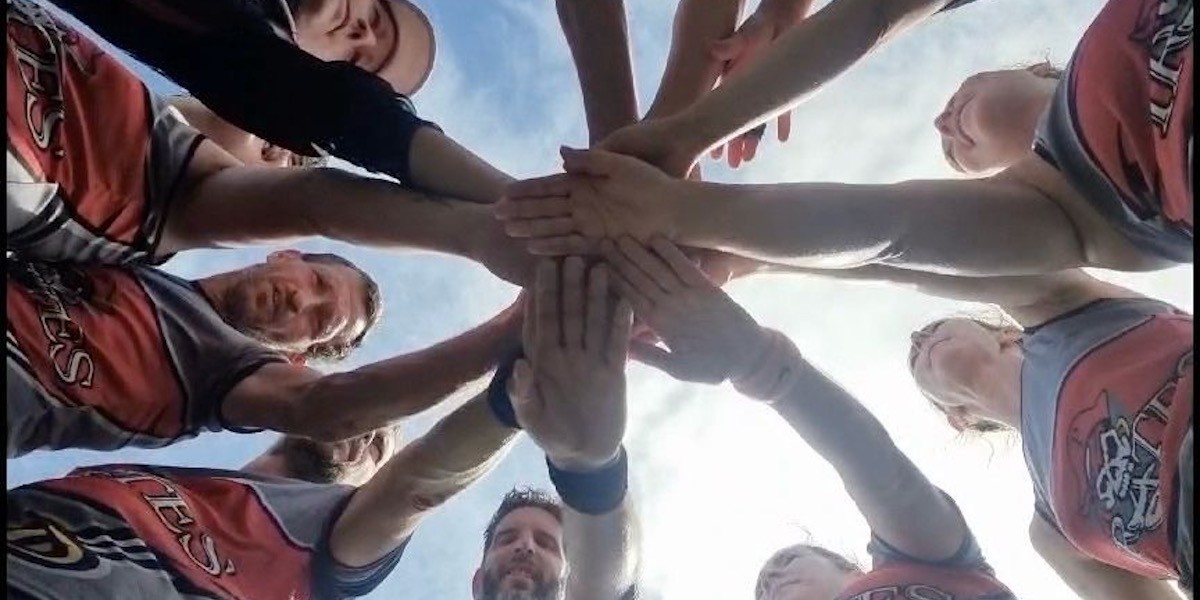Sign-up to receive all the latest news from England Touch
Guidance for Coaches

Here are some basic skills and game principles for any coach to work on with their team.
England Touch does run a number of coaching qualifications, from the entry level Community Coaching Award up to the Federation of International Touch Level 2 required for our international coaches. Email coaching@englandtouch.org.uk for more information.
Game outline
The main aim of the game is for each team to score Touchdowns and to prevent the opposition from scoring (One touchdown equals one point). Teams are made up of 6 players on the field at any given time, with up to 8 substitute players on the sideline. Teams are categorised into Mens, Womens and Mixed divisions (mixed = 3 male + 3 female players). Players can substitute anytime during the game and as often as they like.
Teams are either attacking (if they have possession of the ball) or defending (if they are trying to prevent the other team from scoring). Attacking players must perform a ‘rollball’ (between the legs) once they have been touched by a defender. Defenders must retire in a straight line 7 metres from the ‘roll ball’ mark. After 6 touches, the possession changes to the other team for their turn at attack. Penalties are awarded for a variety of infringements including, forward pass, offside, touch-and-pass, roll-ball over the mark and over-vigorous play.
General principles of play
In attack
The aim of the game is to score more touchdowns than the opposition; this is achieved by advancing towards the try line. At times it can be tactically advantageous to move towards the sideline to enable more room for further attacking plays
In defence
When defending try to deny your opponents time and space by moving forward and making the touch. The faster you move up on the attacking team the less advancement toward your try line they will make
Support the ball carrier at all times
Close support of the ball carrier allows more options in attack and means possession can be maintained. Close support also means no ground needs to be lost by having to pass the ball a long way backwards to a team-mate. Remember a pass directly sideways is allowed and can often be the most effective pass
Interchange players as much as possible
A fresh set of legs on the field can be the difference between winning and losing. Look to interchange your players while on attack and in the area of the interchange box. Once you have made a touchdown it is good to get a whole new set of players out there to keep up the intensity
Core skills
The Touch
A touch can be made on any part of the person, their clothing or the ball.
After a touch has been effected, the player in possession is required to stop, return to the mark where the touch occurred if the mark has been over-run, and perform a Rollball without delay.
After being touched 6 times the ball is handed over to the other side.
If a touch is considered to be too strong a penalty will be awarded against the offending team.
The dummy half (the person who receives the ball from the player starting the game) is not allowed to be caught while in possession of the ball. If the dummy half is caught with the ball, possession is handed over to the opposition who will recommence play with a Rollball
The Rollball
The Rollball is effected by the attacking player positioning on the mark, facing the defenders scoreline, standing parallel to the sidelines, and rolling the ball backwards along the ground between their feet. If the ball is rolled more than 1 metre a penalty will be awarded to the opposition.
The Penalty
If someone is penalised their team must retreat 10 meters. A penalty is taken by placing the ball on the ground, letting go of the ball, touching the ball with your foot and picking up the ball.
Passing
A ‘Forward Pass’ is when the ball is passed in front of the player who possessed the ball. In this situation the ruling will be a penalty. A ‘Touch and Pass’ is when the person who is touched then passes the ball. Again the ruling will be a penalty
Offside
An attacking player is offside when that player is forward of another attacking player who has possession or who last had possession of the ball







